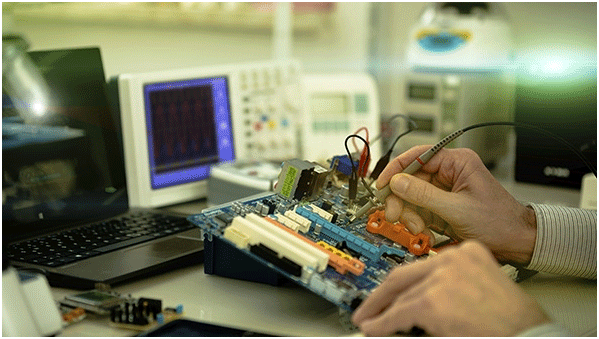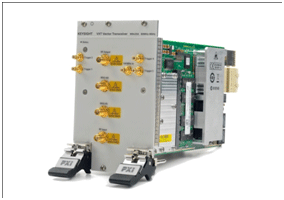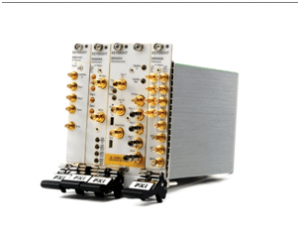“Software Defined Radio has revolutionized electronic systems for a variety of applications that include communications, data acquisition and signal processing. Software-defined systems are becoming increasingly common, with wireless systems leading the way. Together with the introduction of Software Defined Radios the amount of tactical communication will increase dramatically. In order to avoid interference, SDR´s will have to undergo thorough testing in development, production and service”
 The last decade has witness a rapid uptake of software-defined radios (SDRs) in wireless infrastructure and military communications. By replacing hardware components with software, SDRs can be configured at the factory based on customer requirements and then upgraded with additional software. According to the latest report from market analysts Frost & Sullivan, this increased versatility is fueling the demand for more flexible SDR test equipment.
The last decade has witness a rapid uptake of software-defined radios (SDRs) in wireless infrastructure and military communications. By replacing hardware components with software, SDRs can be configured at the factory based on customer requirements and then upgraded with additional software. According to the latest report from market analysts Frost & Sullivan, this increased versatility is fueling the demand for more flexible SDR test equipment.
Frost & Sullivan reported that the market for SDR test equipment was$1.57 billion in 2014, and estimates this will reach $2.83 billion in 2021, mentioned by Stephen Hire, APAC Sales Director, Cobham Wireless.
According to Vishal Gupta, Application Engineer, Keysight Technologies India Pvt. Ltd., “The main driving force for SDR market growth is increasing need for secure and reliable communication; especially for defence and homeland security purpose and even for certain commercial applications.
List of market drivers for SDR growth is as follows:
- Military Requirement as growth driver
- End to End Connectivity
- Secure Networks
- Reliable and Better Performance
- Commercial Requirement as growth driver
- Low Cost Subscriber Units
- Low Cost Base Unit
- Low Cost Network
- Regulatory Requirement as growth driver
- Efficient use of Expensive and Scarce Spectrum as Natural Country Resource
- Build in Innovation Mechanism
While usage of SDR in defence and homeland security is evident in terms of giving more secure and flexible architecture, in future, SDRs will also contribute significantly towards the development of better communication devices, hence, providing a useful prospective for the many applications such as telecommunication and transportation.”
Software Defined Radios (SDRs) are driving the integration of digital signal processing (DSP) and radio frequency (RF) capabilities. This integration allows software to dynamically control communications parameters such as the frequency band used, filtering, modulation type, data rates and frequency hopping schemes. SDR technology is widely used in wireless devices for consumer products, commercial networks, military systems and specialized government applications.
Compared to traditional RF technologies and implementations, SDR enables the development of highly flexible and adaptable devices, allowing efficient device reconfiguration in response to changing requirements.
Stephen Hire, APAC Sales Director, Cobham Wireless, “In the past, much of the adoption of SDR test has been driven by military applications, which were the first to widely deploy SDR technology. However in recent years there has been a growing need for wireless and general RF test equipment to be more flexible in order to adapt rapidly and easily to meet new standards and test requirements. Both software-defined and modular instruments have been key to addressing this requirement. Wireless networks and mobile terminals are continually evolving, adding new technologies, frequency bands and standards, while needing to retain backwards compatibility with legacy standards. This trend will accelerate rapidly with 5G as this moves from the proof-of-concept phase into standardisation and prototyping. It is expected that SDR will evolve so that both the air interface and the networks themselves also become software defined.”
Testing Challenges
Designers have long sought to improve the performance and resiliency of radio communications. With the radio frequency (RF) spectrum becoming more crowded and interference more prevalent in recent years, these efforts have become increasingly critical. This is especially true for those developing military and civil defense radio applications. Military applications must perform in mission critical environments, where malicious signal jamming is common and robust, adaptive communications are required.
“SDR test challenges are multifold as it is not feasible to have R&D engineers located throughout the field to test their radios and its algorithms on realistic scenarios”, says Vishal Gupta, Application Engineer, Keysight Technologies India Pvt. Ltd. He highlights following questions and challenges for SDR R&D engineers:
- How to develop with real-world signals from the field?
- How can R&D engineers work with their design tools, prototype hardware, and test equipment in their lab environment using realistic field signals?
- How can “what-if” scenarios be evaluated, for e.g. how to detect and avoid algorithms when an interferer appears, or in jamming scenarios?
- How can field signals be replicated in a controlled lab environment with metrology-grade test equipment for development and testing?
- RF performance is determined by both hardware and software. How the performance is guaranteed with multiple test platforms with different front end interface e.g. RF, Digital, IF.
- Hardware platforms may come from different vendors and have different capabilities. How to ascertain software compatibility with different hardware?
- Probe test points in the signal path are now digital, as well as analog. Engineers need a consistent way to measure.
- Need to design and test hardware to support waveforms that are yet to be invented.
Vishal adds, “A flexible and comprehensive cognitive radio R&D testbed may thus need the following:
This test bed should be able to:
- Capture field scenarios
- Develop and evaluate algorithms with realistic signal scenarios
- Evaluate simulated radio link performance
- Evaluate “What if” scenarios
- Download field captured signals and regenerate in laboratory environment for hardware prototype testing
- Capture DUT outputs and bring it back in to simulation for evaluation

According to Stephen Hire, APAC Sales Director, Cobham Wireless, “5G will entail testing at multiple frequencies, with several different air interfaces, and for a number of different use cases. The main challenge will be to validate end-to-end network performance under realistic user and traffic scenarios that include all of these parameters and – where appropriate – mobility. The increasing adoption of network function virtualisation (NFV) and the centralisation of the radio access network (RAN) into Cloud RAN (C-RAN) will mean that traditional access points for testing will disappear and that validation will need to be designed into the network and integrated with the NFV architecture.The move towards SDN (software-defined network) and SDAI(software defined air interface), as the RF becomes an integral part of the overall system design, will bring significant test and validation challenges, and the market should prepare for test and validation demanding a larger proportion of their overall budget.”
Test Solutions

Vishal Gupta, Application Engineer, Keysight Technologies India Pvt. Ltd., “Testing a Software Defined Radio requires a signal source and a wideband signal analyzer so that design engineers can create their own solutions that combine an RF Vector Signal Generator, and Vector Signal Analyzer. Both instruments, when used in SDR testing must cover SDRs frequency range while they should also having sufficient modulation and demodulation bandwidth to handle present and evolving SDR modulation formats.
A typical SDR test bed should consist of
- RF Transmitter Module (Vector Signal Generator)
- RF Receiver Module (Vector Signal Analyzer)
- Data Analysis module
- Channel Emulation feature
- Baseband Analysis Module
- Programmable attenuator module
- RF Multiplexer Module
- Software Modules:
- Software Module for Flexible Signal Generation
- Software Module for In-Depth Signal Analysis
Keysight Products
Keysight has complete test solutions to cater to test needs of SDR development life cycle. The solution can be made available in two form factors:
- Box units
- PXI form factor
To test the transmitter Keysight Technologies provides golden receivers in the form of Signal Analyzers N9000A, N9010A, N9020A, N9030A in box from factor and M9391A and M9393A in PXI form factor. Combined with 89601B Vector Signal Analysis Software it form a complete transmitter test bed. Recently introduced Custom IQ demodulation feature in VSA is a powerful feature to test the non-conventional, proprietary and evolving standards.

On the other hand, to test the receiver characteristics Keysight has industry standard vector signal generators like N5172B, N5182B and E8267D in box form factor and M9381A in PXI form factor. Combined with Keysight Signal Studio software it makes a complete tool to test receiver characteristics.
These test solutions are scalable and can be configured to test MIMO radios too.
Newly introduced M9420A Vector Trans-receiver (VXT) add to the solution offering compact signal creation and analysis tools in PXI from factor.

The solution is well complemented with Keysight industry standard simulation tools like Advanced Design Software (ADS) and SystemVue to reduce design test cycle and enhance design efficiency.
These test solutions also complemented with Keysight switching, amplifier and attenuator modules and other accessories to configure a complete test bed including channel emulation.
Keysight also offers a complete SDR test laboratory solution for education institutions which is a combination of test hardware, software and SDR emulation board.
Cobham Wireless Products
For the past few years almost all of the Cobham Wireless validation solutions have been built on software-defined platforms.
For the TM500 network test system the use of SDR means that it has been possible to add support to both new and already-deployed instruments, in a rapid and timely manner, for new 3GPP LTE-A features such as 256 QAM and five-carrier aggregation (5CC) as these are required.
TeraVMis the Cobham Wireless fully virtualized IP test and measurement solution that can emulate and measure millions of unique application flows on either physical or virtual devices. By measuring and analysing performance on each individual applications flow it can easily pinpoint and isolate problems and security issues.
For production testing of mobile terminals and small cells, the software-defined platform of the PXI 3000 modular instrumentation system can be used with PXI Maestro software to address the need for flexible test systems able to track fast changing market requirements, accelerate time to market and lower the cost of manufacture.






